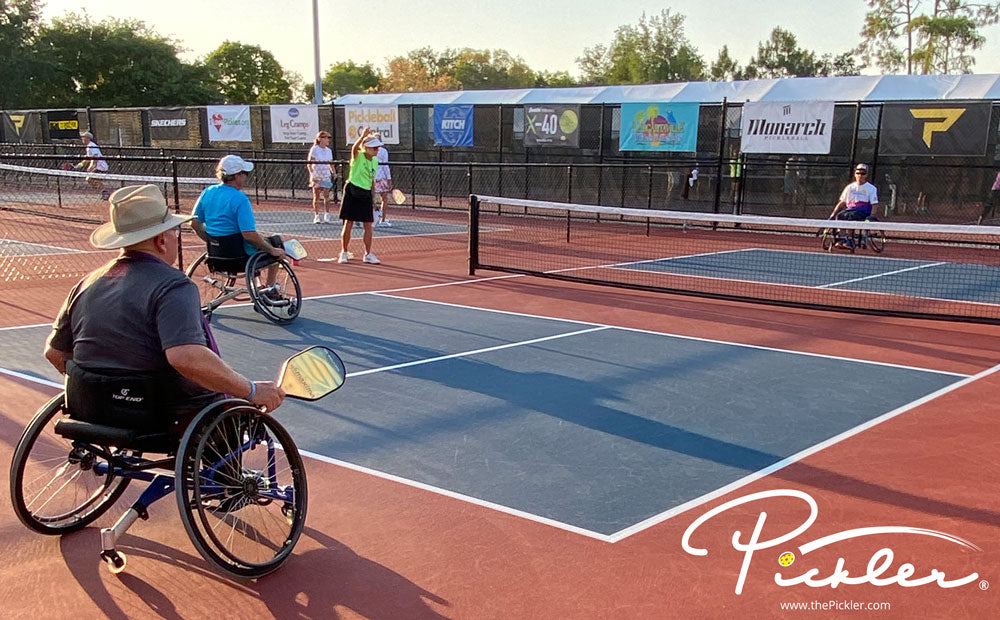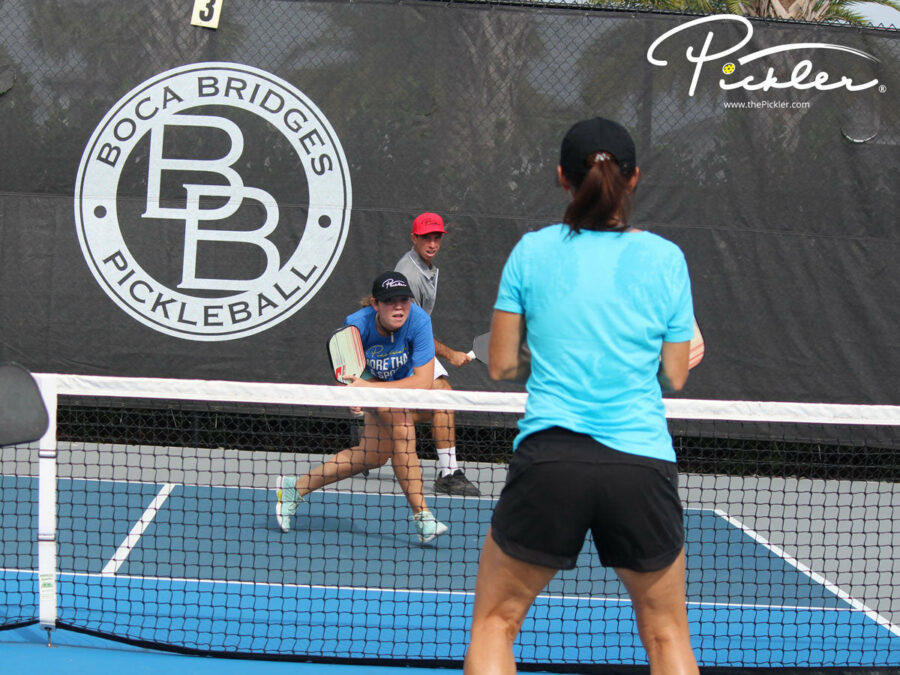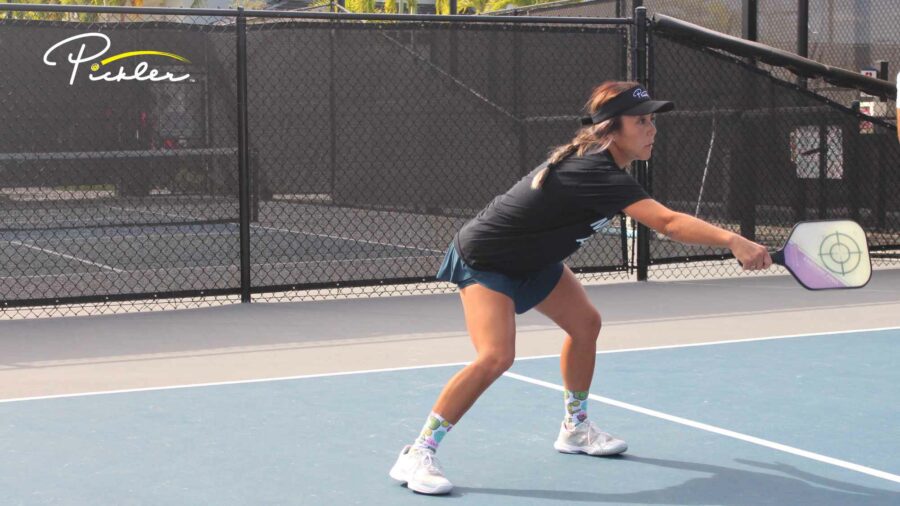What is wheelchair pickleball? Wheelchair pickleball is the game of pickleball where one or more players on the pickleball court are in a wheelchair. Players in a wheelchair must be seated at all times and cannot stand in the wheelchair.
What Are the Differences Between Wheelchair Pickleball Rules and Standing Pickleball Rules?
Wheelchair pickleball generally has the same rules as singles pickleball or doubles pickleball for standing players, with a few exceptions. For instance, the pickleball rules for serving, the Non-Volley Zone, line calls, and faults all apply to wheelchair pickleball in the same manner as singles pickleball and doubles pickleball for standing players. However, wheelchair pickleball has the following differences:
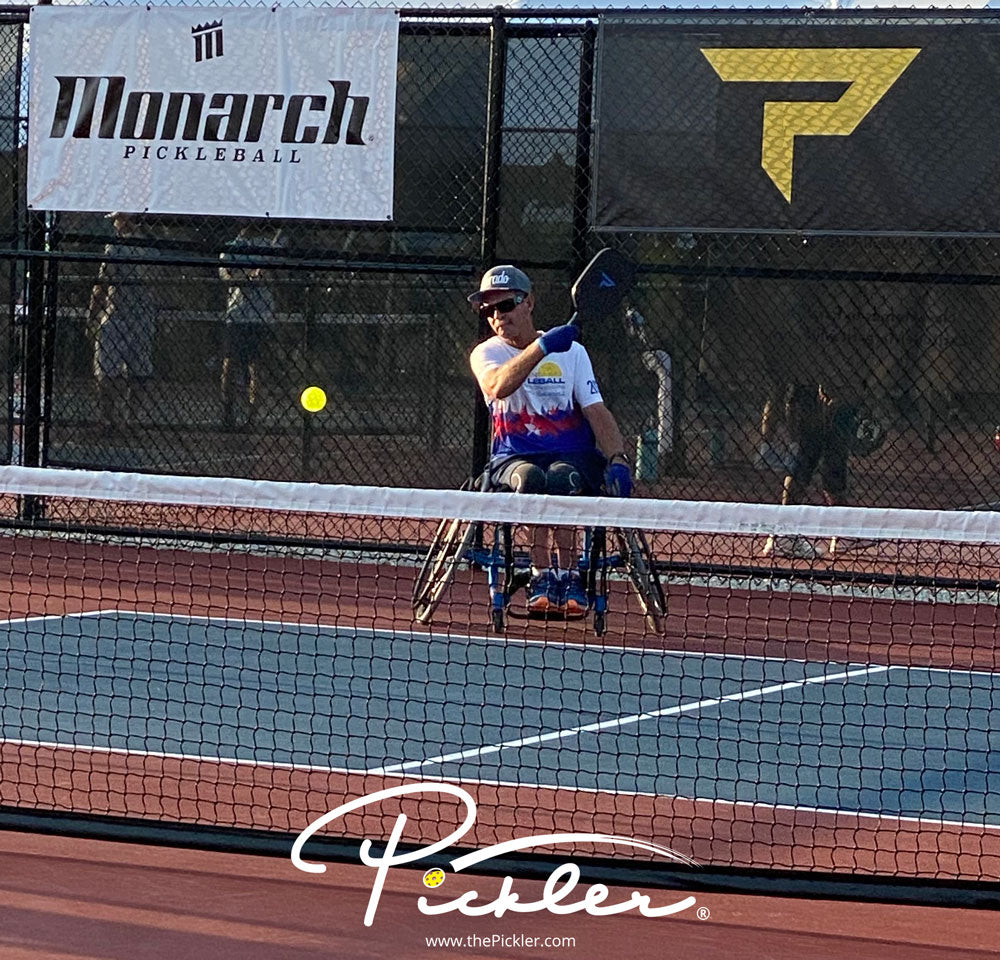
- Larger Pickleball Court Size. The dimensions of a pickleball court are 44 feet long by 20 feet wide, which is the same for any game of pickleball, including wheelchair pickleball. However, the recommended total playing area for wheelchair pickleball is a bit larger, so there is room to move around the outskirts of the pickleball court without risk of injury. The recommended total playing area for a wheelchair pickleball court is 74 feet long by 44 feet wide (which is 3,256 square feet), and the recommended playing area for a stadium court would be to increase to the total playing area to 80 feet long by 50 feet wide (which is 4,000 square feet). If a pickleball court does not have the minimum clearance of 5 feet on the sides of the pickleball court, or 8 feet behind the baseline of the pickleball court, then a replay may be called if the lack of distance prevented a wheelchair player from being able to return the pickleball.
- A Player’s Wheelchair Is Considered Part of the Player’s Body. A player’s wheelchair is considered part of the player’s body. As a result, all of the rules of pickleball for a player’s body will apply to a player’s wheelchair, except for the wheelchair Non-Volley Zone (or Kitchen) rule described below. For instance, if the pickleball makes contact with a player’s wheelchair, then the player would have committed a fault and will lose the rally.
- A Wheelchair Pickleball Player Is Allowed to Hit the Pickleball Off of a Double Bounce. A wheelchair pickleball player is allowed to hit the pickleball off of a double bounce. This differs from pickleball rules for standing players, as a double bounce would be deemed a fault. To note, the double bounce may occur any where on or off the pickleball court.
- A Wheelchair Player’s Rear Wheels Must Be in the Correct Serving Area at the Point of Contact on the Serve. A wheelchair player may have the wheelchair’s front wheels on the baseline or in the pickleball court on the serve. However, at the point of contact on the serve in wheelchair pickleball, a wheelchair player’s rear wheels must be in contact with the correct serving area.
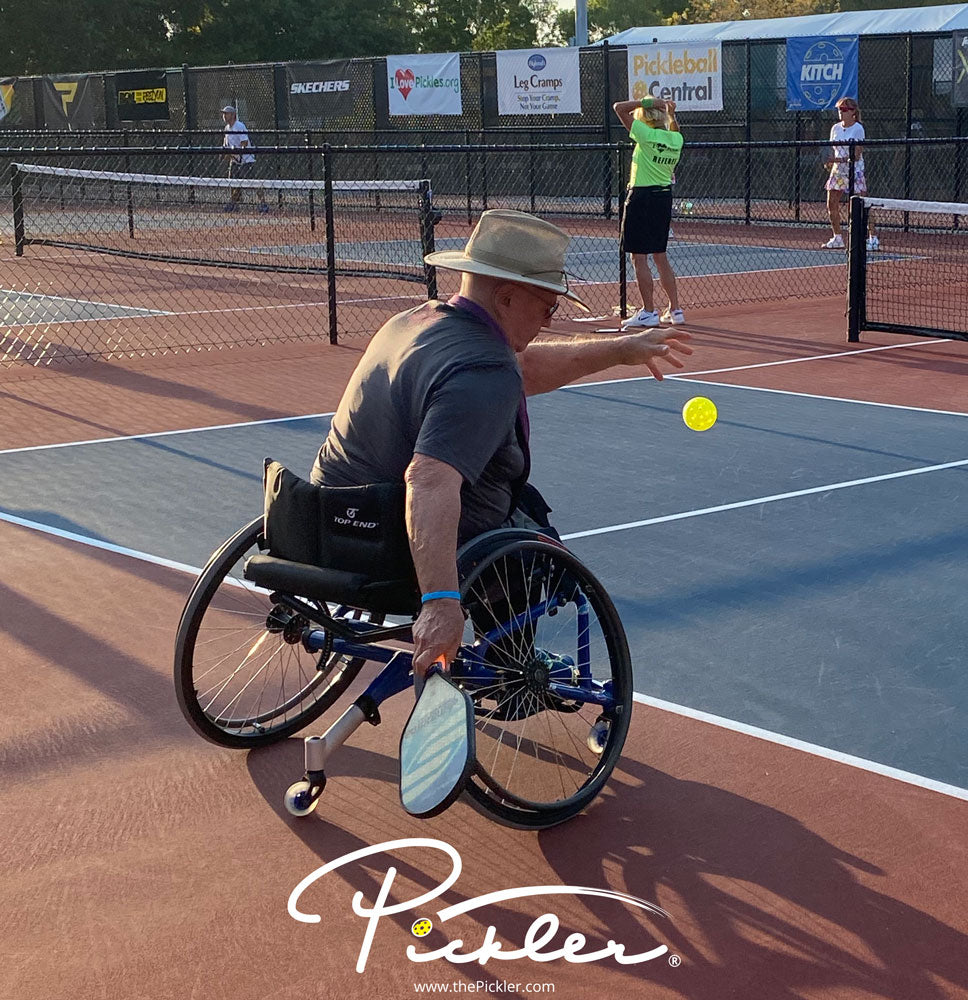
- Non-Volley Zone Faults Are Based on the Back Wheels of a Wheelchair. A wheelchair player may have the wheelchair’s front wheels in the Non-Volley Zone when hitting a volley. However, a wheelchair player may not have the wheelchair’s back wheels in the Non-Volley Zone when hitting a volley. Otherwise, the wheelchair player would have committed a fault and will lose the rally. To note, the double-bounce rule for wheelchair pickleball also applies to a pickleball that lands in the Non-Volley Zone.
- Singles Pickleball for Brackets for a 3.5 Skill Level and Below. For singles pickleball with one or wheelchair players on the pickleball court in brackets for 3.5 skill levels and below, play will be reduced to half of the pickleball court. Players will play the entire rally crosscourt or diagonally. To note, for singles pickleball for brackets for a 4.0 skill level and above, play will be on the entire pickleball court.
If a wheelchair player is playing with or against a standing player, then the rules of pickleball for standing players will apply to the standing players, while the rules of pickleball for wheelchair players will apply to the wheelchair players.
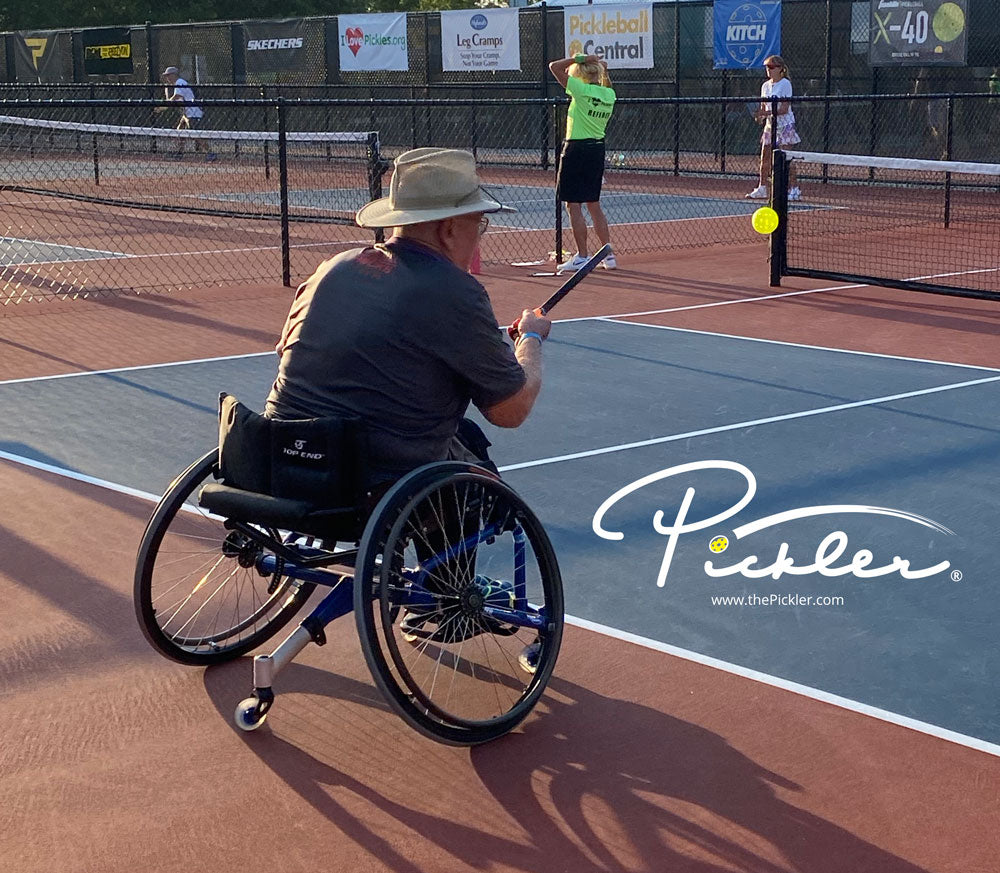
Pickleball is a great game that is able to be played with standing players and wheelchair players alike!
Looking for More Pickleball Rules?
We know pickleball rules can be tricky at times. Don’t worry. Pickler explains the ins and outs of all of the pickleball rules in a series of pickleball rules blogs to make sure that you make the right call on the pickleball court. Learn more by visiting Pickler’s pickleball rules blogs that are linked below!
- Pickleball Rules – The Ultimate Guide to the Rules of Pickleball
- 10 Must Know Pickleball Rules Before Your Hit the Court
- 10 Pickleball Rules Changes to Learn for 2021
- Pickleball Rules – Learn How to Start – 5 Things You Need to Play
- Pickleball Dictionary – Quickly Learn the Pickleball Vocabulary
- Pickleball Serving Rules – Master the Start of Every Pickleball Game
- Pickleball Scoring Rules – Learn How to Keep the Score in Pickleball
- Pickleball Kitchen Rules – Learn Important Non-Volley Zone Rules
- Pickleball Line Call Rules – How to Make the Right Call
- Pickleball Rules – Faults & Dead Balls on the Pickleball Court
- Pickleball Rules – Commonly Misunderstood Rules in Pickleball
- Pickleball Tournament Rules – Must Read Before a Tournament
- Singles Pickleball Rules – How to Play Singles Pickleball
- Wheelchair Pickleball Rules – How to Play Wheelchair Pickleball

